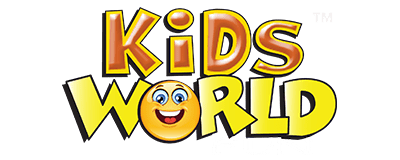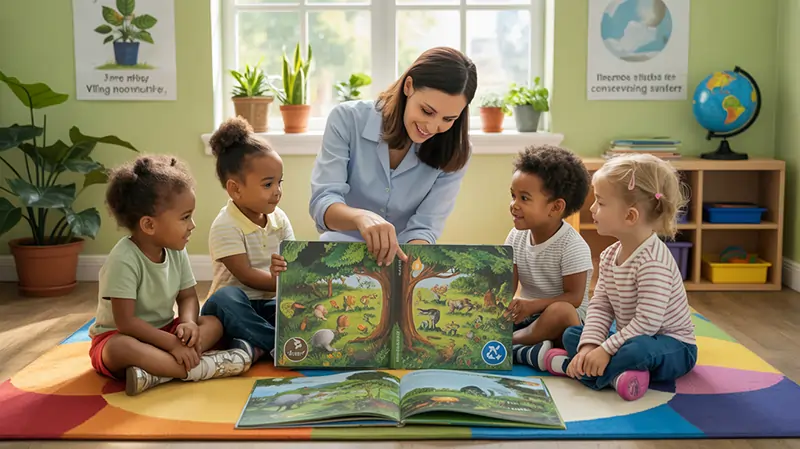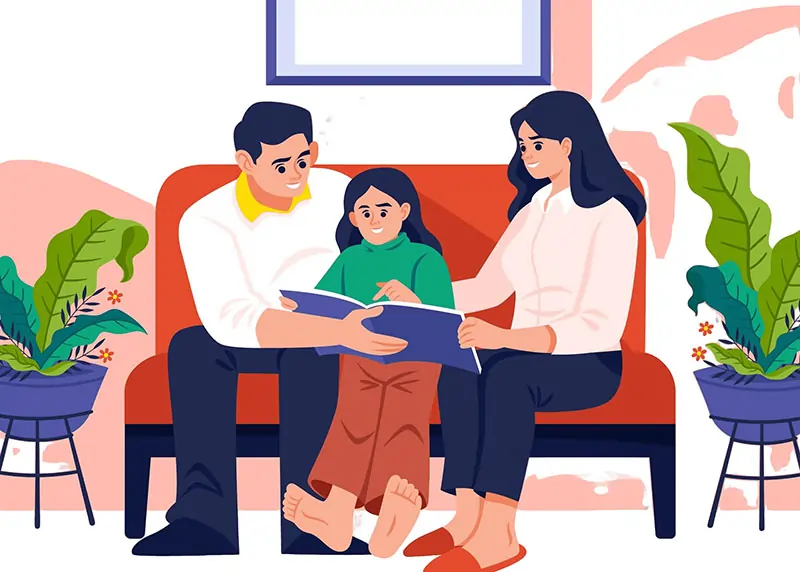Using Picture Books to Introduce Environmental Science in Early Grades
Plastic waste, climate change, and disappearing habitats are all things that are changing the world more and more. That’s why it’s so important to teach kids about the environment early on. But you have to be very careful, creative, and have the right tools to teach these hard subjects to kids. Picture books are what you need.
Picture books are more than just fun stories with lots of colors; they are also great ways to learn. They use bright pictures and stories that are good for kids of all ages to gently teach them about environmental science. The stories are interesting, meaningful, and easy to remember.
Here’s why picture books are useful and how they can help kids learn about science and the environment in the first few grades.
Why Picture Books Work in Early Environmental Education
From preschool to third grade, kids’ brains, emotions, and social skills grow a lot. At this age, kids learn best when they hear stories, repeat things, see things, and do things themselves. Words from environmental science that are hard to understand on their own, like “ecosystem,” “climate,” or “conservation,” become clearer when they are shown with pictures, characters that people can relate to, and a story.
Picture books help you understand big ideas without changing what they mean. They show young readers how beautiful nature is and how humans can change it, and they give them the tools to make a difference in ways that feel possible.
Making Science Emotional: The Power of Empathy
Environmental education is just as much about values as it is about facts. Kids need to care about the planet before they can understand the science behind pollution or cutting down trees.
That’s what picture books do best. They make people feel things. When a child sees a picture of a turtle stuck in plastic or a forest full of animals looking for a new home, they feel for them. This emotional connection is what makes people want to learn more about science.
The Lorax by Dr. Seuss and The Great Kapok Tree by Lynne Cherry are two books that do more than just teach. They make kids think about where they fit in the world and how they can help instead of hurt.
A Standout Example: Pick Up Pals
One of the most effective modern examples of this teaching approach is Pickup Pals. This picture book for young children is full of beautiful pictures and tells the story of a six-year-old girl named Stella who learns about being responsible for the environment.
In the story, Stella and her friends go on a field trip to the nature center. On the way there, they see trash on the side of the road. Instead of ignoring it, they get together to clean up the mess and show the Earth kindness through small but important actions.
The book is special because it is simple, relatable, and full of heart. It doesn’t tell you what to do. Instead, it shows kids how to behave well by using characters they can relate to. This is very important in early education: kids are more likely to copy what they see their friends do (even if it’s made up) than what they hear as rules or lectures.
Books like Pickup Pals show that picture books can do more than just tell stories; they can also teach kids about the environment.
Published with the support of Aero Publishing, a self-publishing company dedicated to helping authors bring their stories to life, Pickup Pals is a great example of how picture books can blend storytelling with environmental education.
Environmental Concepts That Picture Books Can Teach
Picture books can teach a lot about the environment. They can cover a lot of different topics in environmental science, which makes them great for both schools and homes. Some basic ideas they can talk about are:
- The Water Cycle: books that follow a raindrop’s journey
- Pollution and Waste: things like littering, plastic pollution, and recycling
- Ecosystems and Biodiversity: introducing habitats like forests, oceans, and deserts
- Climate Change: simple, age-appropriate ideas about weather and warming
- Renewable Resources: like the sun, wind, and water energy
- Stewardship and Responsibility: through characters who care for nature
Books can either be about these topics directly or include them in stories or fiction, which gives teachers and parents options for how to teach the subject.
How Educators Can Use Picture Books in the Classroom
Here are some fun ways to use picture books in science lessons for young children:
1. Read-Aloud + Activity
Read aloud to the group first, then do an activity with them. For instance, after reading Pickup Pals, you could take the kids on a short walk around the school or playground to clean up. Let them be “Pickup Pals” on their own.
2. Discussion Prompts
Use open-ended questions to get people to think critically.
- “Why do you think Stella wanted to clean up the litter?”
- “What can we do at home to help the Earth?”
- What would happen if no one picked up the trash?”
3. Cross-Curricular Connections
Combine reading, writing, and science. Students can write or draw a thank-you note to sea animals or make posters to get people to think about keeping beaches clean after reading a book about the ocean.
4. Build a Green Library Corner
Set aside a special area in your classroom for picture books about the environment. Rotate them every year, especially on Earth Day and World Environment Day.
How Parents Can Reinforce These Lessons at Home
Parents are very important for helping kids remember the lessons they learn from picture books. This is how:
- Storytime with a Purpose: Pick one book about the environment each week and talk about what it means after you read it.
- Set an example: Kids copy what they see. Get them to help with recycling, composting, and cutting down on waste.
- Spend time in nature: Go for walks, visit nature centers, or work in the garden together. When you do something in real life, books become more powerful.
- Celebrate Wins: Give praise for small things. You can reinforce good habits by saying things like “That’s just like what Stella did!”
Also read: I Spy – A Book of Picture Riddles
A Lasting Impact Starts with the First Page
Picture books are more than just a way to get kids to read; they also teach them to care. Kids in the early grades are starting to think about who they are, who other people are, and the world around them. What they read and hear during these years is very important.
We’re not just planting seeds of knowledge by using picture books to teach kids about the environment; we’re also raising a generation that sees the planet as something worth protecting. And with real, heartfelt stories, we’re giving kids not just the facts but also the motivation to do something.


